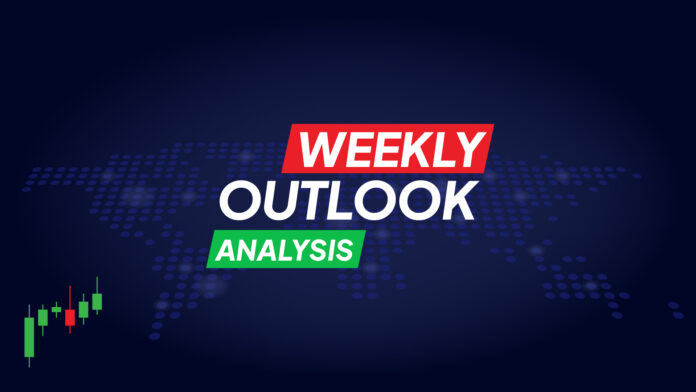Key points to watch out for:
- Most notable will be the ECB, probably with an announcement of a rate cut in June.
- In the United States, dollar will be pushed up by the inflation statistics as well as the Fed minutes.
- Decisions by central banks in the Eurozone, New Zealand and Canada.
European Central Bank meeting
The economy in Europe has hit a rough patch over the past year. Growth has been virtually stagnant, held back by Germany, which entered contraction as the slowdown in world trade suppressed export demand and consequently crippled the manufacturing industry.
On the positive side, economic stagnation has helped to cushion inflation pressures. Inflation fell to 2.4% in March, bringing it closer to the ECB’s target level, thereby positioning the ECB to consider cutting interest rates. Most monetary policymakers plan to make rate cuts in June.
Investors are also thinking along the same lines. The anticipated rate cut in June is likely already priced into the money markets, indicating slower growth momentum and a simultaneous cooling of inflation. Unemployment rates have also risen slightly in 2024, which reinforces the mood that inflation is possibly falling.
It is therefore possible that the ECB will use the meeting next Thursday, April 11, as an impetus to prepare the ground for rate cuts in the summer. European Central Bank President Christine Lagarde could highlight the progress made on inflation and argue that lowering interest rates soon could help reduce the risk of a possible recession.
As for the euro (EUR), its stark figures paint a complicated picture. One reason for the euro’s recent resilience is the plunge in natural gas prices, which has benefited the euro through the trade channel. The upbeat tone in the markets also served as a safe haven for the dollar (USD).
That said, the euro has not been buoyed by economic performance, but rather by developments in other markets. This can end up being a double-edged sword, because it implies that any change in trends could cause the euro to lose its support.
United States: Inflation and Fed minutes
In the US, the focus is on the CPI inflation data along with the minutes of the last meeting held by the Federal Reserve (Fed), both of which are due out Wednesday, April 10. The figures and minutes will help investors learn whether the Fed will cut interest rates in June, to which markets are pricing in a 70% chance.
Estimates point to a revival in inflation with the CPI rate close to 3.4% in March, up from 3.2% in February. However, the Underlying Index is expected to fall to 3.7%. The difference possibly lies in higher oil prices, which have been rising for more than a month, because the underlying figure excludes energy prices.
This could be a mixed report for the Fed. A decline in the core index would be a continuation of disinflationary intent, even though energy prices are keeping headline inflation high.
Meanwhile, the minutes will be used to learn all about the March meeting, where FOMC officials revised up their growth and inflation estimates but continue to project three rate cuts by 2024. It will be important to know what will happen in the internal discussions. That mentioned, it is unlikely that this release will contain any novel revelations as most officials have spoken since the meeting.
As for the dollar, it experienced a strong rally last week, regaining lost ground after the ISM services survey, but then regaining ground thanks to fears of an Iranian attack on Israel.
In an overall view, the fundamentals of the U.S. economy appear to be stronger than most regions. Overall estimates therefore appear to be positive, although for the reserve currency to make a long rally, it may need more signs of weakness from the other economies.
Interest rate decisions in New Zealand and Canada
In New Zealand, the country’s currency has been struggling this year, losing about 4% against the U.S. dollar. The economy fell into a minor technical recession at the end of 2023, which has left consumer and business confidence in doubt. Although inflation remains elevated, markets do not expect any movement from the Reserve Bank at its meeting scheduled for Wednesday, April 10.
For the New Zealand dollar (NZD) to recover on a sustained basis, it may need a significant recovery in China that will end up boosting demand for the country’s commodities.
In this regard, trade data from China will be closely watched on Friday, April 12, looking for any signs of a recovery. Other releases to highlight on Friday include monthly GDP statistics in the UK.
In Canada, the central bank meets on Wednesday, April 10, and markets are expecting a 15% chance of an immediate rate cut as core inflation has fallen steadily. Massive population growth has helped loosen labor market conditions, tempering concerns about wage-driven inflation. The downside is the housing shortage, which underpins high housing inflation.
Consequently, it is unlikely that the Bank of Canada will cut interest rates at the next meeting, although it may give more precise signals that cuts are imminent. The Canadian dollar (CAD) may also be boosted by oil prices, as any escalation of the conflict could directly benefit the exporting currency.



